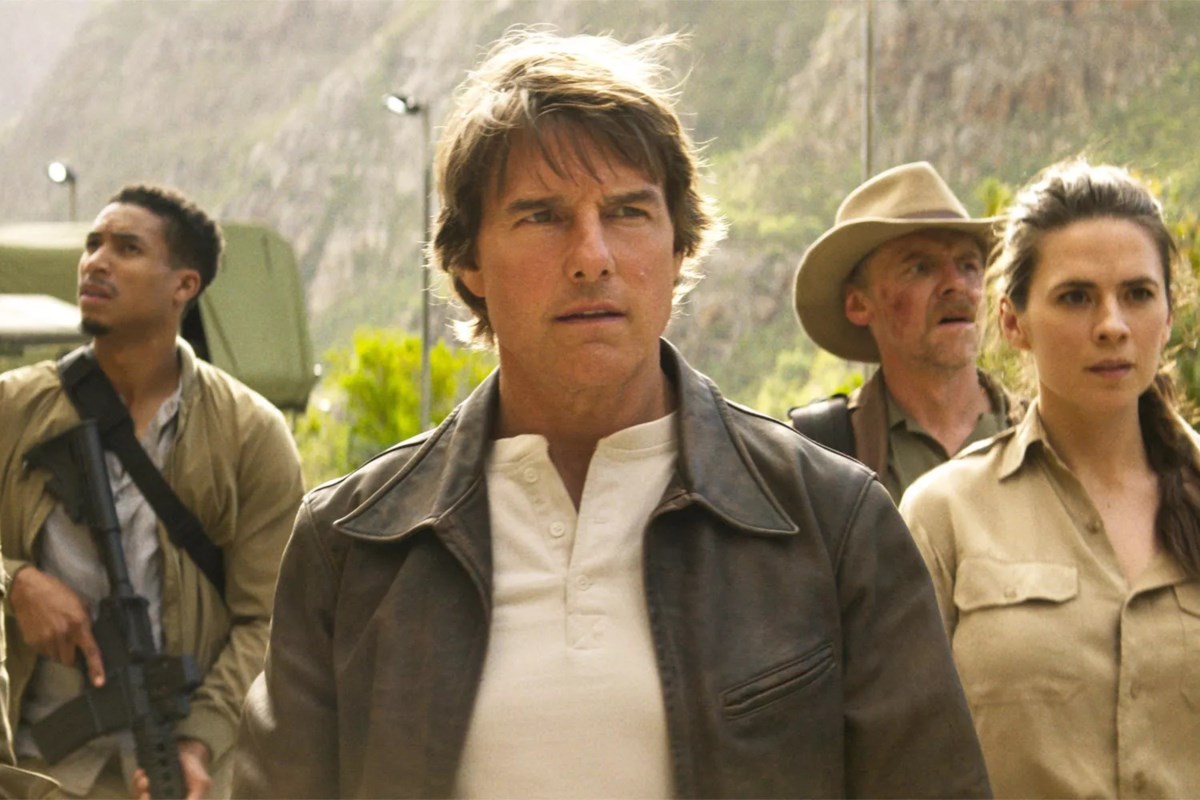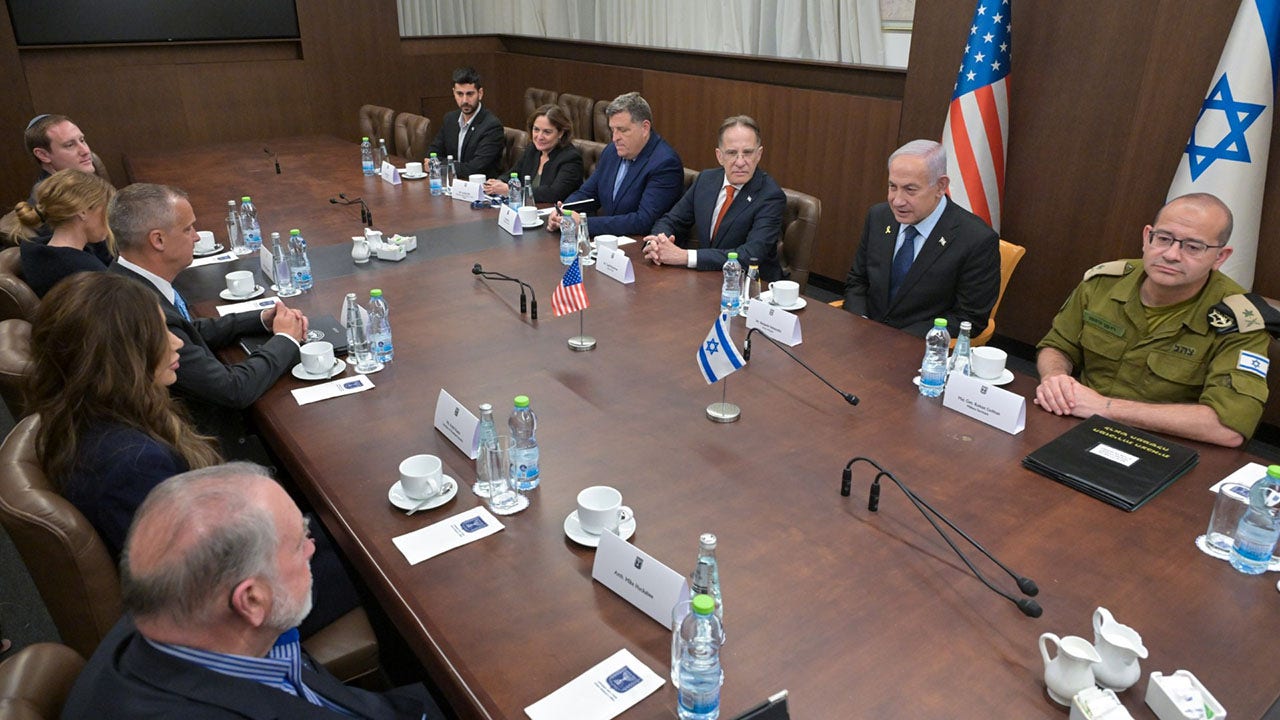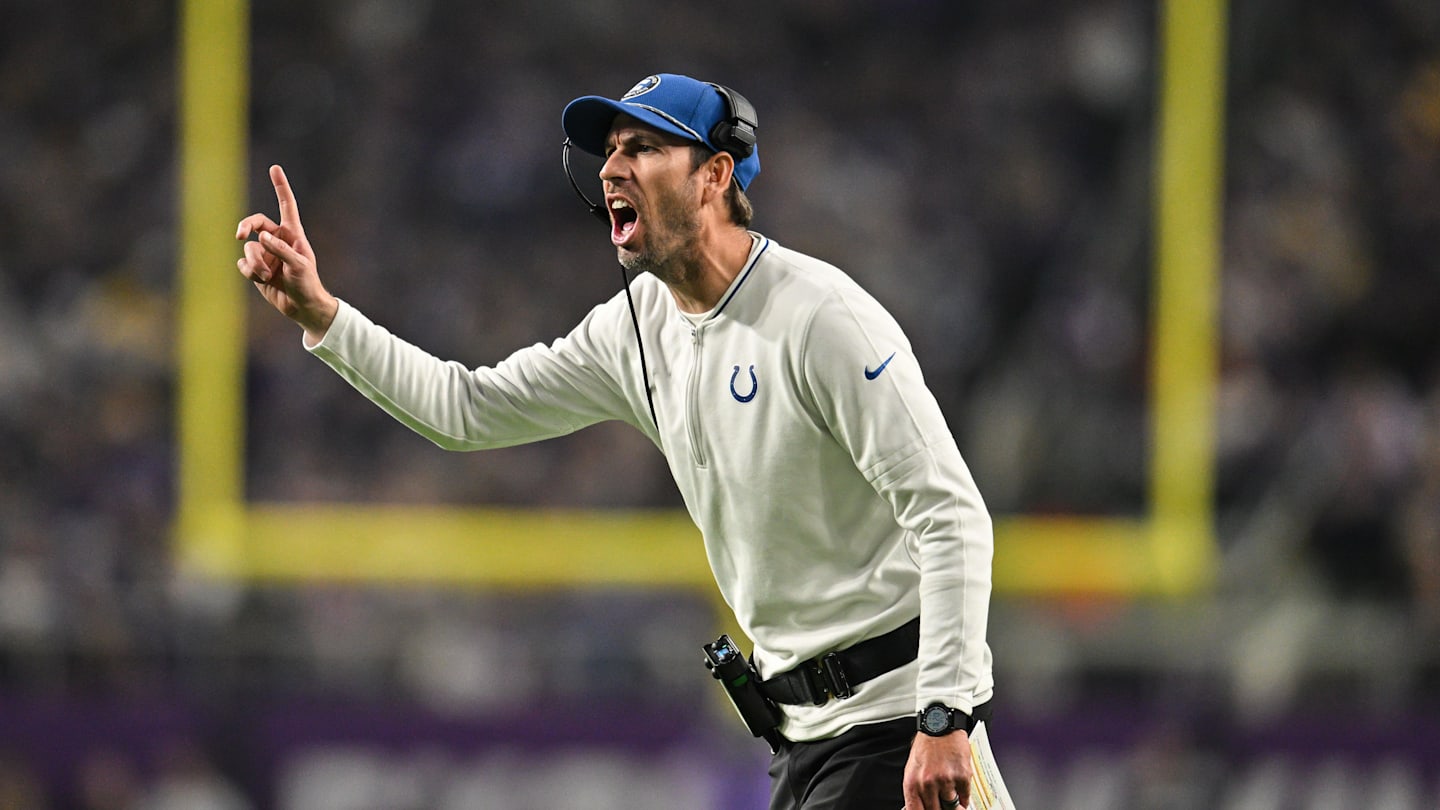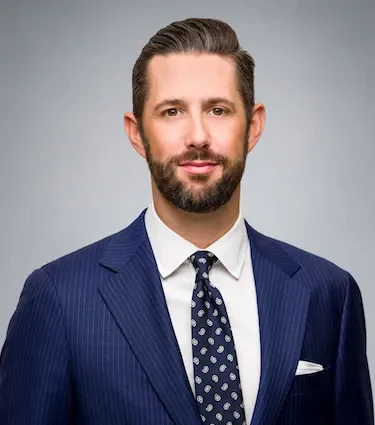New York
Federal Officials May Shut Down Overdose Prevention Centers in Manhattan

As street drugs have become ever more powerful and deadly, a small nonprofit in Manhattan dedicated to preventing overdoses has drawn politicians and health officials from around the country searching for possible solutions to the opioid epidemic.
But now, Manhattan’s top federal prosecutor is warning that the group’s methods are illegal, and is suggesting that his office could crack down — and perhaps even end the effort.
The group’s strategy — known as supervised consumption — is simple, but radical: Let people use illicit drugs at special centers, under the watchful eye of nonprofit workers who can intervene if something goes wrong. The group, OnPoint NYC, said on Tuesday that its two overdose prevention centers have reversed 1,000 overdoses since they opened more than a year and a half ago, at a time when the drug supply contains the dangerous opioid fentanyl in growing concentrations.
The centers, in East Harlem and Washington Heights, were authorized by City Hall in 2021, and are the only such sites operating openly in the nation. Research on more than 100 such sites in other countries, where some have operated for decades, has found they reduce public drug use and lower mortality rates.
But on Monday night, in response to a request for comment, the U.S. attorney responsible for Manhattan issued an apparent warning that came in stark contrast to the more tolerant approach the Biden administration had been signaling toward the centers.
“I have repeatedly said that the opioid epidemic is a law enforcement crisis and a public health crisis,” Damian Williams, the U.S. attorney for the Southern District of New York, said in a statement to The New York Times. “But I am an enforcer, not a policymaker.” Until New York policymakers take action to authorize the supervised consumption sites, he said, they are operating in violation of federal, state and local law.
“That is unacceptable,” he added. “My office is prepared to exercise all options — including enforcement — if this situation does not change in short order.”
The centers are considered illegal because the fentanyl, crack and other drugs consumed there are controlled substances, and because a federal law known as the “crack house statute” bars individuals from maintaining property where controlled substances are consumed.
In 2019, the Trump administration took legal action to block a similar center in Philadelphia from opening. The case remains in litigation. But OnPoint’s supervised consumption sites have functioned for 21 months without disruption by law enforcement and with the knowledge of local, state and federal authorities.
The U.S. attorney’s office did not immediately clarify what options it was considering, including whether it might move to shutter the centers if lawmakers did not act. A spokeswoman for the Department of Justice in Washington said that supervised consumption sites were being evaluated on a district by district basis, in discussion with local leaders, to determine “appropriate regulatory guardrails.”
There is visible drug activity on the block around OnPoint’s East 126th Street site, and detractors have criticized such centers generally, suggesting that they condone rather than deter drug use, potentially making the problem worse.
Sam Rivera, the executive director of OnPoint NYC, rejects those arguments. The area has been a “hot block” for drug dealing for years, he said, not because he brought it there, but because it made sense to open where drug users already are.
“It is really frustrating that a health issue has become a political issue,” he said in an interview at the center. “What we know is no one ever has to die again of an overdose, ever. They’re preventable.”
In response to the U.S. attorney’s comments, Mr. Rivera said he welcomed a conversation with officials and pointed to his organization’s relationship with the city police, which he said “highlights the effectiveness of responding to this crisis with love and care, rather than enforcement.”
The main cause of the current overdose crisis is fentanyl — an opioid 50 to 100 times stronger than morphine — which has been detected in more than 80 percent of accidental drug overdose deaths in New York City. The city had 2,668 fatal drug overdoses in 2021, and 2022 is expected to be even worse once the official numbers are tallied. Statewide in 2021, 5,841 people died.
Gov. Kathy Hochul has declared the situation a public health emergency. The state has won $2.6 billion in settlements from opioid makers and distributors, and last fall, an advisory board recommended that she use some of the money to fund supervised consumption centers like OnPoint.
She declined, citing the legal barriers. Instead, this summer she announced plans to channel the funds into other harm reduction efforts, including fentanyl test-strip distribution, syringe exchange programs, drug treatment programs and an educational podcast about drug abuse called “Addiction: The Next Step.”
“Governor Hochul is committed to aggressively tackling the opioid crisis and has invested a historic $2.8 billion in addiction services since taking office,” said Avi Small, her spokesman.
Former Mayor Bill de Blasio authorized the supervised drug use centers through an executive action shortly before leaving office, and Mayor Eric Adams has continued to indicate his support and called for more centers to be established. But the supervised consumption component of their work is funded by private donors, often people who lost a loved one to an overdose, and not public funds, Mr. Rivera said.
Far from being in the shadows, the center hosts a steady stream of officials from other states and communities that are considering establishing their own sites. Four of the five local district attorneys in New York City — all but Staten Island’s — have said they back the centers.
The centers have street teams that clean up needles and encourage users to come inside, where they are also offered medical care, food, acupuncture, and case workers who can arrange for detox upon request. They would like to be would be open 24 hours a day, instead of roughly 12 hours a day on weekdays, Mr. Rivera said.
Other organizations that work to help drug users are seeking to open similar centers in the Bronx and other boroughs.
The National Institute on Drug Abuse, a federal entity, announced in May that it is funding a five-year study to assess the impact of OnPoint on drug users and the communities in which it operates. Rhode Island is the only state to have authorized such centers through legislative action, though none have yet opened there.
Among those who have had their overdoses reversed at OnPoint is Eddie M., 69, a former typesetter who travels almost every day to East Harlem from Brooklyn so he can inject his drugs under supervision. Because he uses illegal drugs, he asked that only the first initial of his last name be used.
Last Tuesday afternoon, he sat in a mirrored booth, so that staff members could monitor him, and prepared a speedball — a mixture of crack cocaine and street opioids — before loading it into a needle. A staff member tied off his upper arm with a blue tourniquet to help him find a vein.
Before discovering OnPoint, Eddie would use in hallways or parks. At OnPoint, there is a crash cart filled with equipment ready to go if he loses consciousness, which has happened to him there at least three times.
It’s been months since he overdosed, though, and he said the staff at the center have taught him to be more careful about how he uses. “The people are just wonderful,” he said. “I mean, I have never experienced anything like it.”
The centers have been used about 84,000 times by about 3,700 registered participants since opening, OnPoint said.
Participants bring in their own drugs, sign in and write down what they will be using, and can smoke or inject. Outside the supervised injection area, they can relax and watch television, or get other services.
It is impossible to know how many of the 1,000 overdoses OnPoint says it has reversed would have been fatal without intervention. Because they intervene so quickly, staff members are able to handle most overdoses simply by administering oxygen. When they do use naloxone, a drug that reverses the effect of opioids, they typically inject a small dose. They have called for an ambulance only about 20 times, said Rayce Samuelson, an OnPoint overdose prevention specialist.
In Albany, legislation has been introduced to more explicitly permit the centers and grant some legal immunity to those who operate them, but it has not passed. The City Council has also not passed legislation authorizing the centers.
Gustavo Rivera, a state senator from the Bronx who sponsored the Senate bill, has argued that Governor Hochul could expand state support to the centers through executive action alone. There are precedents, he said, such as her creation of a state agency to regulate marijuana despite its being illegal under federal law.
Ms. Hochul’s office noted that marijuana was legalized in the state before she funded that agency. In March, she said it was the city’s “prerogative” to experiment with the centers and even expand them, “but as far as a statewide policy, it’s something that we are exploring.”
“I would encourage us to be brave about this,” Senator Rivera said. He has been taking other lawmakers to tour the centers to try to convince them to vote yes. “As we do nothing, more and more people die in every corner of our state.”

New York
N.Y.C.’s Mayoral Candidates Spent Millions on TV Ads. What Are They Saying?

Estimated spending on
broadcast ads that have aired
$1.1 million
$4.3 million
The Democrats running for mayor in New York City and a super PAC supporting Andrew M. Cuomo are spending millions to reach potential voters, with much of the spending going toward commercials on broadcast television. A New York Times analysis of the broadcast ads that have aired so far, using data from AdImpact, explored the major themes highlighted by the candidates: crime and safety, President Trump, affordable housing and corruption.
Among the ads aired,
seven mention crime and safety
3 ads
Mr. Cuomo, the former governor, has been framing himself as a law-and-order candidate who will crack down on crime and improve public safety. Ads run by Fix the City, the super PAC backing Mr. Cuomo, have depicted New York as a city in chaos. One of its ads opens with images of police sirens, caution tape and subway riders fleeing a smoke-filled train.
“Crime is rampant,” says a voiceover in another pro-Cuomo ad, also paid for by Fix the City. That ad also references Mr. Cuomo’s “five-borough crime and affordability plan,” which would add “5,000 more cops” to the streets.
Other candidates took a subtler approach. Scott Stringer, a former city comptroller, said in his only broadcast ad to air so far that he would “put a cop on every train” and “hire more mental health workers.” An ad for Brad Lander, the current city comptroller, tied the idea of safety to Mr. Lander’s plan to “end street homelessness for the mentally ill.” An ad for Zohran Mamdani, the state assemblyman, simply said he would make New York a “safer city.”
Among the ads aired,
five mention President Trump
2 ads
Taking jabs at Mr. Trump and his administration could almost be considered a requirement for candidates running in a Democratic primary in a city where former Vice President Kamala Harris won about 70 percent of votes in the 2024 presidential election. Still, some of the ads that mention the president are more direct than others.
An ad for Mr. Stringer was among the most explicit: “We deserve a mayor who can get our city back on track and keep this schmuck out of our business,” Mr. Stringer says over a clip of Mr. Trump dancing at a rally, adding that he will “tell Trump where to stick it.”
Mr. Lander drives a large forklift around a junkyard in his broadcast ad and places cars into a crushing machine. One of the cars has the words “Trump & Musk” in large black letters across the side.
Other candidates made only passing swipes at the president. Some of the ads supporting Mr. Cuomo mentioned that he took on Mr. Trump as governor and will again as mayor, and an ad for Mr. Mamdani said he would stand up to Mr. Trump. Mr. Myrie’s broadcast ad did not mention Mr. Trump.
All ads mention affordable housing
3 ads
Every broadcast ad reviewed in the analysis mentioned housing at least once. In one ad, Mr. Mamdani likened Mr. Cuomo to the current mayor, Eric Adams, whose housing policies have been similar to the former governor’s, and whose popularity declined after he was indicted on fraud and corruption charges in 2024. The Trump administration later dropped the charges.
“Cuomo is running for Adams’s second term,” Mr. Mamdani said in the ad, adding that he will “take on bad landlords and greedy corporations.”
Mr. Adams and Mr. Cuomo are both moderates who have many of the same donors, including powerful real estate leaders, and both have supported housing policies that are in stark contrast to Mr. Mamdani’s. The mayor and former governor both oppose freezing increases for rent-stabilized apartments, for example, while one of Mr. Mamdani’s ads is devoted solely to his plan to freeze rent prices.
In ads for other candidates, housing is mentioned only briefly. An ad by Fix the City for Mr. Cuomo said he will “cut red tape for affordable housing and build 500,000 new units.” In Mr. Stringer’s ad, he said he will “turn vacant lots into affordable apartments.” Mr. Myrie’s ad says he has “the boldest plan to build affordable housing.”
Among the ads aired,
three mention corruption
0 ads
Several of the candidates mentioned corruption in their ads. In Mr. Lander’s ad, a second car is brought out to be crushed, this one symbolizing “corruption,” specifically as it relates to Mr. Cuomo.
“Andrew Cuomo spent $60 million of your money to defend himself in court. That’s corrupt,” a voiceover says as the car is brought to the crushing machine. “But Brad Lander fights corruption.”
In the ad in which Mr. Mamdani compares Mr. Cuomo to Mr. Adams, the candidate paints the former governor and mayor as the corrupt establishment, responsible for making the city unaffordable.
“Working people are being pushed out of the city they built, and it’s because corrupt politicians like Eric Adams and Andrew Cuomo have sold us out to billionaires and corporations, rigging the economy against us,” Mr. Mamdani says over a series of images that combine Mr. Cuomo’s face and quotes about the former governor from news articles.
Mr. Stringer defines corruption less precisely, mentioning that he “fought corruption” as comptroller. The three pro-Cuomo broadcast ads by Fix the City did not mention corruption, nor did the ad for Mr. Myrie.
Total spending on advertising,
including future broadcast spots
| Total spent | Broadcast share | |
|---|---|---|
|
Fix the City (pro-Cuomo super PAC) |
$8.1 million | 91% |
 Mamdani |
$3.0 million | 41% |
 Lander |
$2.3 million | 72% |
 Stringer |
$1.9 million | 83% |
 Myrie |
$1.7 million | 27% |
Spending on ads that have already aired on broadcast television, which this analysis focused on, is one slice of candidates’ overall ad spending. They have also purchased broadcast spots to air more ads in the future, as well as ads on other platforms like streaming television, satellite and internet. Broadcast was, however, a major focus for the candidates.
Fix the City, the pro-Cuomo super PAC, has spent the most on advertising by far, with 91 percent of its spending devoted to commercials on broadcast networks. (Mr. Cuomo’s campaign has not yet aired any of its own ads on broadcast television, according to AdImpact.)
By contrast, the campaign for Mr. Mamdani, which has become known for its savvy approach to social media, has spent just 41 percent of its advertising budget on broadcast, according to the AdImpact data. (Mr. Mamdani’s campaign has, however, spent more on broadcast than any other individual platform.)
One of the leading Democrats in the mayor’s race, Adrienne Adams, the speaker of the New York City Council, has not yet aired an ad on broadcast television. The candidate struggled to raise funds early in her campaign, but recently got an infusion of $2 million from the city’s fund-matching program, which the campaign said it would use for an aggressive ad blitz in the coming weeks before the June 24 primary.
New York
Are You Smarter Than a Billionaire?

Over the course of one week, some of the richest people in the world descended on New York’s auction houses to purchase over $1 billion of art. It might have played out a little differently than you would have expected.
Can you guess which of these works sold for more?
Note: Listed sale prices include auction fees.
Image credits: “Untitled,” via Phillips; “Baby Boom,” via Christie’s Images LTD; “Hazy Sun,” With permission of the Renate, Hans & Maria Hofmann Trust/Artists Rights Society (ARS), New York; via Christie’s Images LTD; “Petit Matin,” via Christie’s Images LTD; “Concetto spaziale, La fine di Dio,” Artists Rights Society (ARS), New York/SIAE, Rome; via Sotheby’s; “Baroque Egg with Bow (Orange/Magenta),” via Sotheby’s; “The Last Supper,” The Andy Warhol Foundation for the Visual Arts, Inc./Licensed by Artists Rights Society (ARS), New York; via Christie’s Images LTD; “Campbell’s Soup I,” The Andy Warhol Foundation for the Visual Arts, Inc./Licensed by Artists Rights Society (ARS), New York; via Christie’s Images LTD; “Miss January,” via Christie’s Images LTD; “Fingermalerei – Akt,” via Sotheby’s; “Grande tête mince (Grande tête de Diego),” Succession Alberto Giacometti/Artists Rights Society (ARS), NY; via Sotheby’s; “Tête au long cou,” Succession Alberto Giacometti/ARS, NY/Photos: ADAGP Images/Paris 2025; via Christie’s Images LTD; “Revelacion,” Remedios Varo, Artists Rights Society (ARS), New York / VEGAP, Madrid; via Christie’s Images LTD; “Le jardin nocturne,” Foundation Paul Delvaux, Sint-Idesbald – ARS/SABAM Belgium; via Christie’s Images LTD.
Produced by Daniel Simmons-Ritchie.
New York
Video: How a Mexican Navy Ship Crashed Into the Brooklyn Bridge

On Saturday, a Mexican Navy ship on a good will tour left a New York City pier bound for Iceland. Four minutes later, it crashed into the Brooklyn Bridge. [Spanish] “It’s falling!” [English] “No way!” Here’s what happened. The Cuauhtémoc had been docked on the Lower East Side of Manhattan for four days, open to visitors looking for a cultural experience. As the ship prepared to leave on Saturday night, a tugboat arrived to escort it out of its pier at 8:20 p.m. The ship’s bow, the front of the vessel, faced Manhattan, meaning it would need to back out of its berth into the East River. As the Cuauhtémoc pulled away from shore, the tugboat appeared to push the side of the ship, helping to pivot the bow south toward its intended route. The river was flowing northeast toward the Brooklyn Bridge and the wind was blowing in roughly the same direction, potentially pushing the ship toward a collision. Photos and videos suggest the tugboat was not tied to the ship, limiting its ability to pull the ship away from the bridge. The Cuauhtémoc began to drift north, back first, up the river. Dr. Salvatore Mercogliano, who’s an adjunct professor at the U.S. Merchant Marine Academy, told The Times that the ship appeared to be giving off a wake. This suggests its propellers may have been running in reverse, pushing it faster toward the bridge. The tugboat sped alongside the ship as it headed north, possibly trying to get in front of it and help the ship maneuver the other way. But it was unable to cut the ship off or reverse its course. All three masts crashed into the underside of the Brooklyn Bridge at approximately 8:24 p.m., four minutes after the ship had left the pier, causing the top sails to collapse. Crew members standing on the masts during the collision were thrown off entirely. Others remained hanging from their harnesses. A New York City patrol boat arrived about eight minutes after the collision, followed quickly by a fire department boat. Additional law enforcement and emergency medical services removed the wounded for treatment. According to the Mexican Navy, two of the 227 people aboard the ship were killed and 22 others were injured.
-

 Movie Reviews1 week ago
Movie Reviews1 week agoMOVIE REVIEW – Mission: Impossible 8 has Tom Cruise facing his final reckoning
-

 Politics1 week ago
Politics1 week agoTrump honors fallen American heroes, praises God in Memorial Day address: 'Great, great warriors'
-

 Politics1 week ago
Politics1 week agoTrump admin asking federal agencies to cancel remaining Harvard contracts
-

 Culture1 week ago
Culture1 week agoCan You Match These Canadian Novels to Their Locations?
-

 Politics1 week ago
Politics1 week agoHomeland Security chief Noem visits Netanyahu ahead of Jerusalem Day
-

 News1 week ago
News1 week agoHarvard's president speaks out against Trump. And, an analysis of DEI job losses
-

 Technology1 week ago
Technology1 week agoThe Browser Company explains why it stopped developing Arc
-

 News1 week ago
News1 week agoRead the Trump Administration Letter About Harvard Contracts















